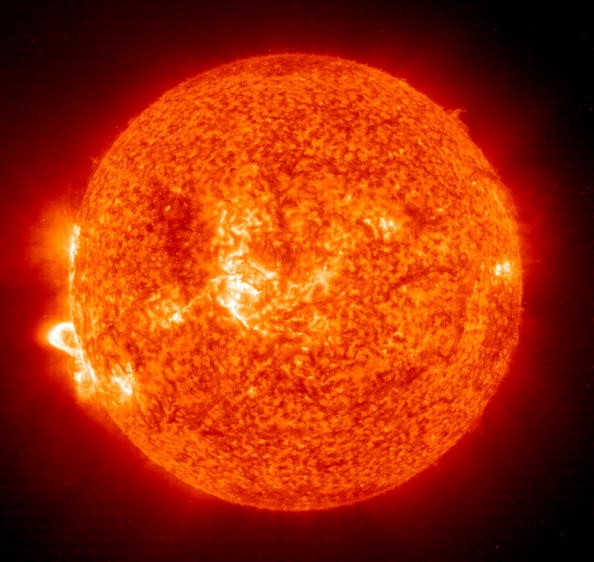A "high-speed" solar storm could hit our planet tomorrow. Experts claimed it can eventually lead to complications with the power grid and satellite technology issues.

Solar Flare
Scientists monitoring the surface activity of the Sun have detected a sunspot that released coronal mass ejection (CME) or a solar flare. While this flare was released some days ago, it is almost getting to Earth and could hit tomorrow.
When it hit the earth, on June 8, it could spark a G1 class geomagnetic storm. A solar storm of this power can bring about "weak power grid fluctuations" and can have a "slight impact on satellite operations". On June 7, Lead astronomer for Space Weather, Dr. Tony Phillips, wrote on the blog: "Today, geomagnetic activity is low.
"Tomorrow could be stormy. On June 8, a high-speed solar wind stream is anticipated to buffet Earth's magnetic field, bringing a slight possibility of G1-class geomagnetic storms."
Coronal mass ejections (CMEs) come to fruition from the existence of 'sunspots' on our host star's surface. They are generally cooler than the other surface of the Sun as sunspots are regions of strong magnetic fields. The magnetism is so powerful that it actually keeps some of the heat from getting away.
Also Read: Everything You Need to Know About Solar Storms: Dangers Explained
Government's Preparation For Solar Flares
However, as the magnetic field builds, it boosts pressure in the sunspot which has the possibility of erupting as a solar flare, or a CME. While most solar flares are not strong, the ex-advisor to Boris Johnson, Dominic Cummings, said the Government's preparation for solar flares is woeful.
Although in 2011 solar flares were put on the National Risk Assessment, still just a little has been done to prepare, Mr. Cummings told the Science and Technology, and Health and Social Care Committees, in a hearing that took place in May.
He said: "There is not a culture of talking to experts from outside. I'll give you a recent instance, I was speaking with some people who said to me 'did you ever go and read the plan on solar flares?"
'I said no, and they said if you get advice from an expert on that you'll see the current government plan on that is just totally hopeless. "If that happens we're all going to be in a worse condition than Covid."

Earth's Magnetosphere
There ought to be an entirely thorough, total review of all risk register programmes. "Every 25 years on average the Sun releases an extreme solar flare, past studies have uncovered. With the last Earth-hitting one coming in 1989.
This storm saw power outages in Canada, Quebec, as conducting rocks on Earth can hold the extra energy from the magnetic shield and then plough it into the national grid.
On top of that, a great solar storm can down satellite systems, as the solar particle bombardment can expand Earth's magnetosphere, making it more difficult for satellite signals to go through.
Related Article: Solar Storm Incoming: A Particularly Intense Geomagnetic Storm Will Hit Earth on May 13
For more news, updates about solar storms and similar topics don't forget to follow Nature World News!
© 2024 NatureWorldNews.com All rights reserved. Do not reproduce without permission.





